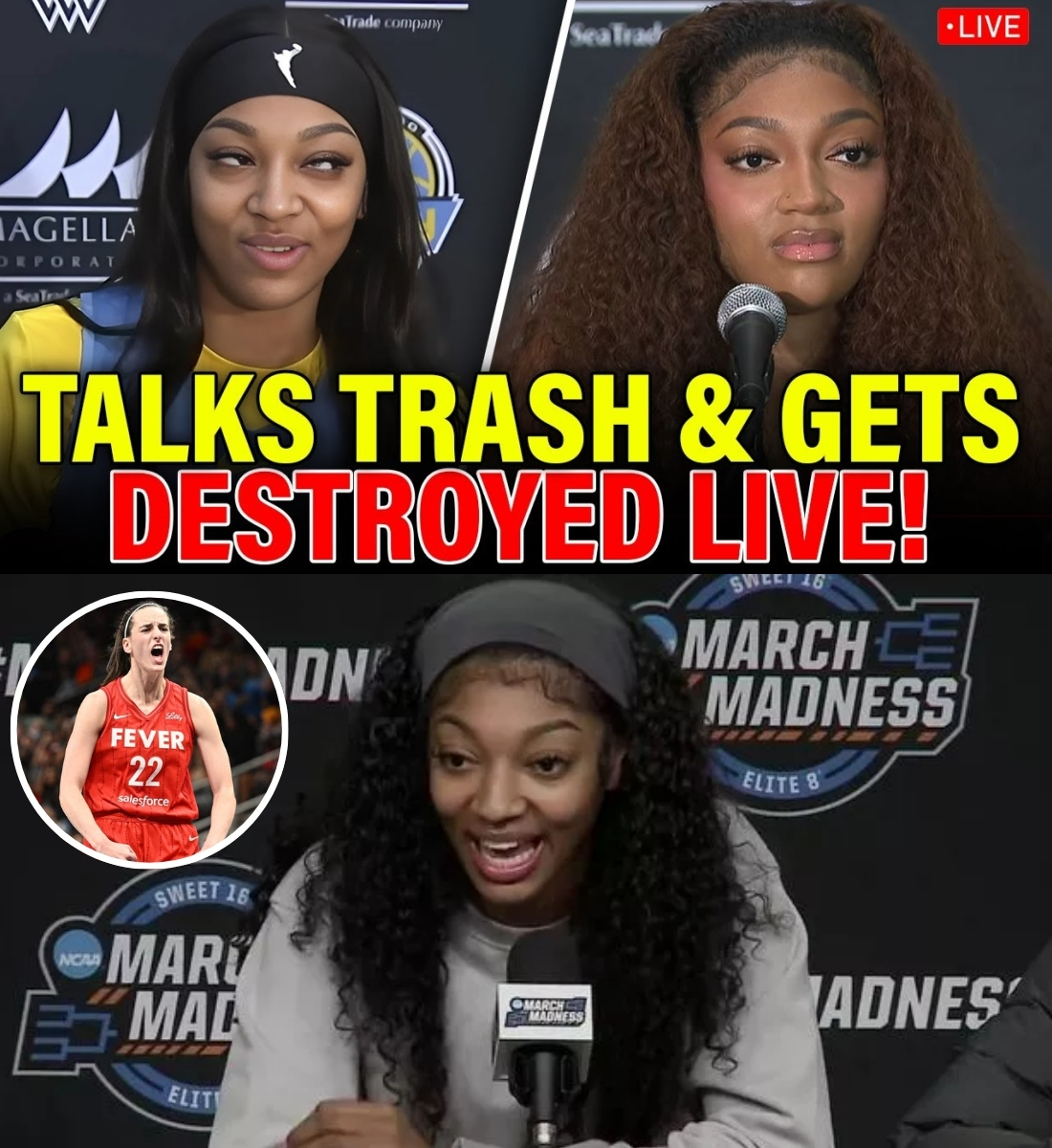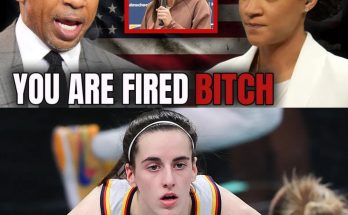
Angel Reese Faces Tough Questions on Her Impact as Caitlin Clark Transforms the WNBA
In the world of women’s basketball, few stories have generated as much buzz as the ongoing rivalry and comparison between Angel Reese and Caitlin Clark. Both athletes have been at the center of media attention, but recent events have cast a spotlight on the stark differences in their impact on the WNBA, fan engagement, and the broader sports landscape.
The conversation reignited when a Chicago Sky reporter confronted Angel Reese during a press conference, referencing her bold claim from the previous season: “People watch women’s basketball because of me, too.” The question was simple—did Reese still believe her statement held true after a year of WNBA competition? Reese’s response, a curt “Next question,” quickly went viral, sparking debate across social media and sports talk shows.
The moment was uncomfortable, not just for Reese, but for the entire room. It was a rare instance where a high-profile athlete chose not to defend or elaborate on a statement that had once defined her public persona. The silence spoke volumes, especially in contrast to the numbers and trends that have defined women’s basketball over the past year.
To understand why this moment resonated so deeply, it’s important to revisit the context. Angel Reese rose to national prominence after LSU’s victory over Iowa in the NCAA championship, where her rivalry with Caitlin Clark became a defining narrative. Reese embraced the spotlight, positioning herself not only as a top player but as a driving force behind the sport’s growing popularity. Her assertion that she was equally responsible for the surge in viewership and sold-out arenas was bold—and, in the eyes of many, a necessary confidence for any athlete at the top of their game.
However, the past year in the WNBA has painted a different picture—one where cold, hard facts have replaced bold proclamations. The numbers tell a story that is difficult to ignore. The Chicago Sky, Reese’s team, averaged around 8,000 fans per game last season. In contrast, the Indiana Fever, led by Caitlin Clark, consistently sold out their home games at Gainbridge Fieldhouse, with over 17,000 fans in attendance for each outing. Even preseason games featuring Clark have commanded ticket prices exceeding $600, a figure unheard of for exhibition basketball and higher than some NBA contests.
Merchandise sales further illustrate the divide. Clark’s jersey became the second best-selling basketball jersey in 2024, trailing only NBA superstar Steph Curry. She is the only WNBA player to crack the top ten, outpacing even established NBA veterans. Meanwhile, Reese’s name is absent from the list, highlighting the difference in marketability and mainstream appeal.
Television viewership has followed the same pattern. Games featuring Caitlin Clark regularly draw over one million viewers, a milestone rarely reached in women’s basketball. The Indiana Fever will have 41 out of their 44 games nationally televised this season—more than even the Los Angeles Lakers, one of the NBA’s most iconic franchises. This unprecedented coverage reflects Clark’s unique ability to attract audiences and drive revenue, making her a transformative figure not just for her team, but for the entire league.
Reese’s supporters, including her mother, have attempted to shift the narrative by emphasizing championship banners and dismissing the focus on attendance and ratings. Yet, the defensive tone of these responses only underscores the reality: bold claims must eventually be backed by results. The “Next question” moment was not just a dodge—it was an admission that the numbers do not support the narrative Reese tried to create.
The contrast between the Indiana Fever and the Chicago Sky extends beyond individual star power. The Fever have built their organization around Clark, surrounding her with veteran talent and investing in marketing campaigns that highlight her impact. Their “Now You Know” campaign, featuring slogans like “Every Game Is a Home Game,” captures the phenomenon of Clark’s drawing power. Teams across the league have moved their games to larger NBA arenas just to accommodate the demand when the Fever come to town.
The Chicago Sky, on the other hand, appear uncertain about how to position Reese. While she remains a promising young player, there is little evidence of a strategic plan to build around her in the same way the Fever have with Clark. The difference is not just about individual talent, but about organizational vision and commitment.
As the 2025 WNBA season begins, all eyes are on the Indiana Fever and Caitlin Clark. The team has transformed from an afterthought to the league’s most talked-about franchise in less than a year. With record-breaking ticket sales, merchandise revenue, and television exposure, the Fever are now the gold standard for how to leverage star power in women’s professional sports. Clark’s ability to fill arenas and capture the attention of celebrities and casual fans alike has set a new benchmark for what is possible in the WNBA.
Meanwhile, Angel Reese faces the challenge of living up to her own words. The attendance figures for her homecoming game at LSU—a modest 6,000 fans in an arena that seats over 13,000—illustrate the gap between perception and reality. Other preseason games have drawn even fewer spectators, raising questions about her true influence on the sport’s growth.
This isn’t to diminish Reese’s accomplishments or potential. She remains an important figure in women’s basketball and a role model for aspiring athletes. But the reality is clear: in the battle for attention, revenue, and cultural relevance, Caitlin Clark is leading the charge. Actions, as the saying goes, speak louder than words.
The lesson for athletes, organizations, and fans is straightforward. Greatness is not just about making bold claims—it’s about delivering results that can be measured and seen. As the WNBA continues to grow, the examples set by Clark and the Fever offer a roadmap for how to turn star power into sustained success.
As the season unfolds, the story of Angel Reese and Caitlin Clark will continue to captivate fans and shape the future of women’s basketball. But for now, the numbers don’t lie. One player has transformed the league, while the other faces the difficult task of proving her impact on and off the court.

